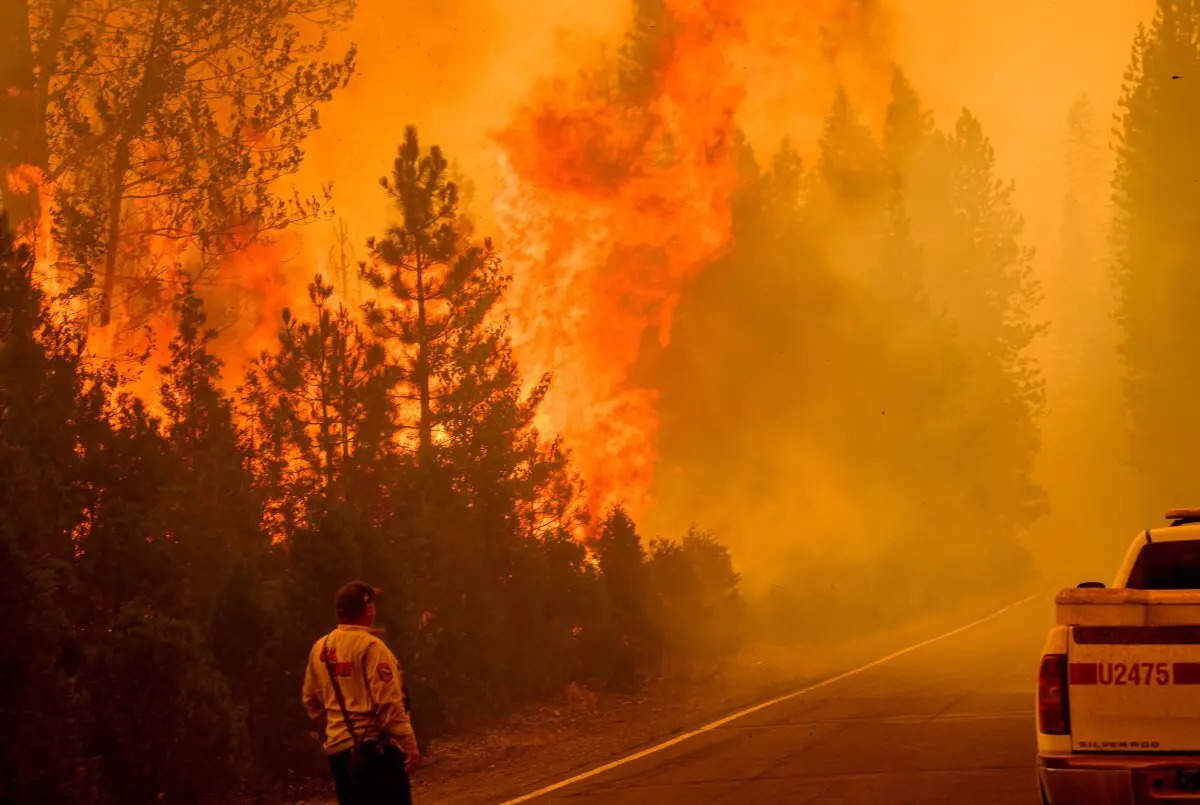Thousands of firefighters from across the country, including Utah and Texas, are battling the fire, which is now 34% contained.The fire is spreading northeast through Lassen National Forest, fueled by critically dry conditions and steep terrain, making containment efforts challenging.
Eric Kurth, a meteorologist with the National Weather Service in Sacramento, noted that while hot, dry weather has hampered firefighting efforts, a shift to cooler temperatures and higher humidity is expected, which could aid in slowing the fire’s progress. “It’s not a dramatic change. It’s slow. But each day is getting a little better,” Kurth was quoted saying by NYT.
How the fire started
The Park Fire ignited near Chico, a town in Butte County, north of Sacramento. The blaze quickly expanded, ballooning to over 1,20,000 acres within a day and nearly doubling in size shortly after. Authorities have determined the fire was caused by arson, under unusual circumstances: a man pushed a burning car into a gully, igniting the surrounding area.
The suspect, Ronnie Stout, 42, of Chico, was arrested on July 25 and charged with felony arson and arson with aggravating factors. Stout, who has prior felony convictions for child molestation and robbery with great bodily injury, faces a potential sentence of 25 years to life if convicted.
Challenges in firefighting
Butte County, home to 2,10,000 residents, has a tragic history with wildfires. The 2018 Camp Fire, the deadliest in California’s history, decimated the town of Paradise, killing 85 people. In 2021, the Dixie Fire burned nearly 1 million acres in the Feather River Canyon.
Despite the region’s history of fires, the area where the Park Fire is burning had not experienced a blaze in many years, leading to dense vegetation that is fueling the fire. Record heat and two rainy winters have also contributed to an abundance of dry vegetation across California.
The fire’s rapid spread and the difficult terrain have complicated firefighting efforts. Jahaira Zaragoza, a spokesperson for Cal Fire, highlighted the challenges, including lava rock formations and steep, remote areas that are hazardous for firefighters to access.
Comparing the park fire to past wildfires
The Park Fire is now the fourth-largest wildfire in California history, covering an area approximately 14 times the size of San Francisco. It is on track to surpass the Mendocino Complex Fire, which burned over 4,59,000 acres in 2018, as the third-largest in the state.
However, the Park Fire still falls short of the August Complex Fire, the largest wildfire in California’s history, which burned over 1 million acres in 2020.
The role of climate change
Wildfires are a natural part of the ecosystem in the western United States, but climate change is exacerbating their frequency and intensity. Experts warn that the heat and dryness linked to climate change are creating conditions for larger, more destructive wildfires, and that wildfire seasons are becoming longer.
California’s history of wildfire suppression and the construction of homes near forests have also contributed to the state’s increasing wildfire activity. This year, wildfires have already consumed about 7,91,000 acres in the state, significantly more than the 1,12,000 acres burned at the same time last year.
Experts caution that this season could be particularly dangerous, with conditions ripe for more large-scale wildfires in the coming months.






